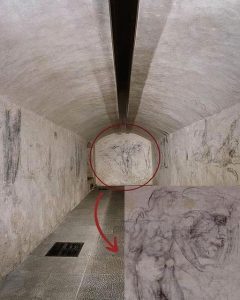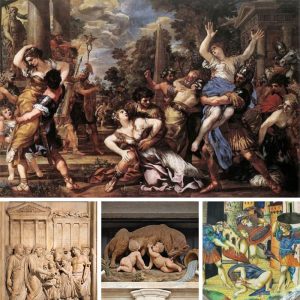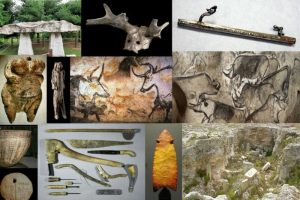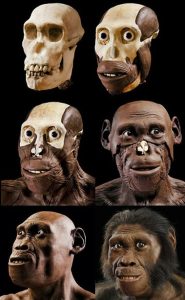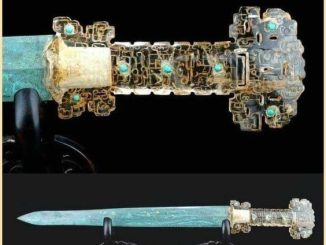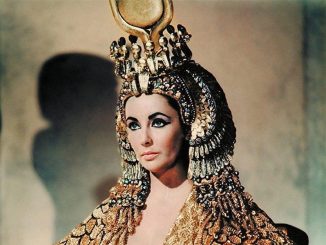Located within the serene confines of the San Pietro in Vincoli in Rome, Michelangelo Buonarroti’s statue of Moses is a quintessential masterpiece of Renaissance sculpture. Carved in 1515 as part of the grand tomb for Pope Julius II, this imposing figure not only showcases Michelangelo’s unparalleled skill in sculpting but also captures the emotional intensity and humanism that define the Renaissance period.
Historical Context
Michelangelo was commissioned in 1505 by Pope Julius II to create a tomb that was to be unmatched in scale and grandeur. However, due to various interruptions, including the artist’s work on the Sistine Chapel ceiling, the project was scaled down significantly. What was initially envisioned as a three-tier structure with over 40 statues ended up as a more modest, yet no less striking, ensemble, with Moses as its central figure.
Description of the Statue
The statue of Moses is depicted with horns on his head, a feature based on a translation error from the Vulgate Bible, which Michelangelo used as his reference. Instead of rays of light (keren or קָרַן in Hebrew), the Latin translation described Moses as having “horns.” The figure exudes a sense of power and authority, seated majestically, his muscles taut, and his expression intense. He holds the tablets of the Ten Commandments under his arm, his beard flowing, and his gaze fixed in a contemplative yet commanding manner.
Artistic Significance
Michelangelo’s Moses is celebrated for its dynamic composition and the emotional depth it conveys. The sculpture breaks away from the traditional stoic representations of religious figures, presenting Moses with a complexity that suggests both his strength and inner turmoil. This aligns with Michelangelo’s reputation for infusing his sculptures with soul-stirring realism, making them appear as if they were about to spring to life.
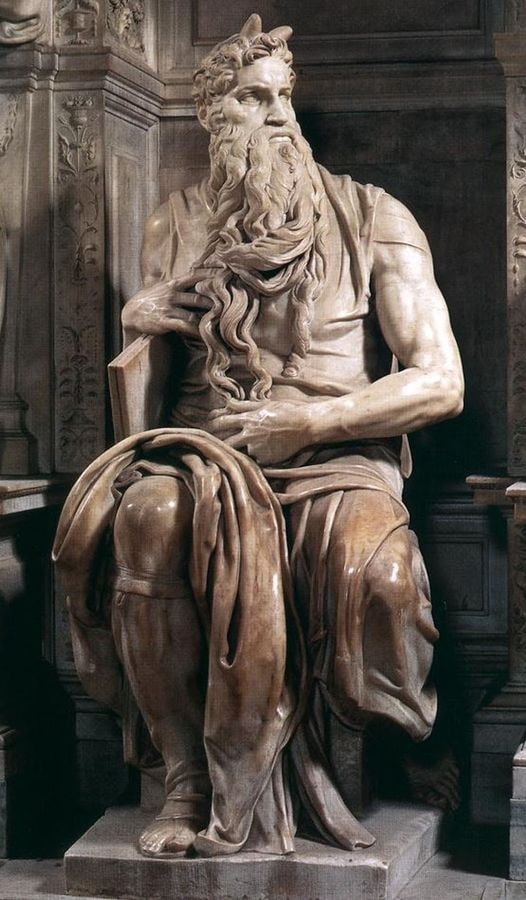
Michelangelo’s Mastery
Michelangelo’s technical prowess is evident in the meticulous carving of Moses’s drapery and the detailed texture of his hair and beard, which contrast with the smoothness of his skin and the tablets. Each element is executed with such finesse that Moses’s robe appears soft to the touch, despite being carved from marble. This level of detail not only exemplifies Michelangelo’s dedication to his craft but also his ability to manipulate marble to capture the very essence of human emotion and divine inspiration.
The Statue Today
Today, Moses continues to draw visitors from around the world, serving as a highlight of artistic pilgrimage in Rome. For art historians and enthusiasts, the statue remains a pivotal study in Renaissance art, reflecting the era’s ideals and its renewed focus on humanism. For the faithful, it is a profound representation of biblical history, embodying the spirit of one of the most important prophets in Judeo-Christian tradition.
In conclusion, Michelangelo’s Moses is not merely a sculptural achievement; it is a narrative in marble. It stands as a testament to the enduring genius of Michelangelo Buonarroti, whose works continue to inspire awe and reverence centuries after they were created.
